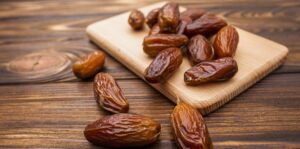What is the Ketogenic Diet?
The ketogenic diet may be a diet during which there’s a reduced intake of carbohydrates and a high intake of lipids (fat).
The ketogenic diet aims to market a decrease in glycogen stores (muscle and liver glycogen stores), inducing a metabolic condition, ketosis, during which the liver produces ketone bodies.
The production of ketone bodies appears naturally as a body’s response to fasting, prolonged workup, or in other situations during which there’s a compromise within the carbohydrates available to be used by the body.
In the ketogenic diet, the consumption of carbohydrates can vary and go from a minimum of 10g to a maximum of 50g per day (about 10% of daily energy needs), with a high supply of lipids (> 60% of daily energy needs ) and moderate protein consumption.
At the identical time, a discount within the total amount of calories consumed within the day will be made or not, counting on the diet’s aim.

Mechanism of action – How does the ketogenic diet work?
The ketogenic diet stimulates the metabolic effects of fasting, promoting fats’ utilization as an energy source.
When there’s no consumption of carbohydrates, for instance, within the case of fasting or when the consumption of carbohydrates is deficient, the body seeks alternative routes of obtaining energy, namely through the metabolization of fats.
During fasting or when consuming carbohydrates is incredibly low, the body uses fat reserves and produces ketone bodies. Ketone bodies can successively be used for energy production.
Ketosis occurs undue to high fat intake, but because of reduced carbohydrate intake.
As a rule, it takes between 2 to three days, with a carbohydrate consumption of but 50g per day, for the body to enter into ketosis.
In what situations can the Ketogenic Diet be applied?
The ketogenic diet was initially studied and developed to help control epilepsy (a disorder characterized by seizures). It has begun to be employed in the 1920s to assist control seizures in these patients.
Initially, in patients with epilepsy, this diet consisted of keeping patients fasting for two to 4 days until a state of ketosis was reached.
In epilepsy, the ketogenic diet affects seizures’ control because electrical stimuli are attenuated by using ketone bodies rather than carbohydrates as an energy source.
Other possible applications for the ketogenic diet are studied, as an example in cases of type 2 diabetes and obesity (overweight).
With the increasing number of obesity cases, the ketogenic diet has been increasingly studied and wont to aid weight loss.
As a rule, it takes 2 to three days for the body to enter the ketosis process. However, the time required varies from individual to individual, relying on the body mass index and individual metabolic rates. Thus, when the ketogenic diet is applied in an exceeding context of weight loss, some individuals thin more quickly than others.
The induction of ketosis for weight loss situations positively affects satiety, allowing the implementation of an eating plan with more significant calorie restriction and better adherence to it, since the individual feels greater satiety with it.
However, when the ketogenic diet is applied to promote weight loss, it shouldn’t be seen as a lifestyle, but as a transitional, innovate the load loss process. Cenforce 200 also effective to treat your love life.
Contraindications to the ketogenic diet
The ketogenic diet isn’t recommended for all individuals, with specific contraindications and situations during which it’s not recommended in any respect.
This diet is completely contraindicated in individuals with diseases during which the metabolism of fats is compromised in those that require high amounts of carbohydrates.
The following conditions are contraindications for the applying of the ketogenic diet:
- Pancreatitis
- Liver failure
- Disorders of fat metabolism
- Primary carnitine deficiency
- Carnitine palmitoyltransferase I or II deficiency
- Defects in ß-oxidation
- Porphyria
- Pyruvate carboxylase deficiency
- Gallbladder disease or individuals who have removed the gallbladder
- Disorders of eating behavior or a history of eating disorders
Inability to keep up adequate nutrition.
There are some risks related to implementing a ketogenic diet. Within the short term, symptoms almost like “flu” or “respiratory illness or constipation” that result from the body’s adaptation process to the diet may occur, like headaches, fatigue, and dizziness.
As there’s a discount on fiber consumption at the intestinal level because of the restriction within the consumption of vegetables, fruits, and whole grains, there’s a risk of constipation (“constipation”).
What foods are allowed and eliminated within the ketogenic diet?
For the body to enter a ketosis process, it’s necessary to scale back carbohydrates’ consumption to a daily maximum of 50g, being essential to eliminate the most dietary sources of carbohydrates.
Among the foods that aren’t allowed within the ketogenic diet are bread, cereals, rice, pasta, potatoes, legumes, certain vegetables (for example, corn), and the majority fruits.
Regarding fruit, only those with a coffee carbohydrate content are allowed, always counting on the individual to individual, and therefore the daily value of carbohydrates allowed.
On the opposite hand, excessive consumption of protein (for example, meat, fish, eggs, dairy products) can prevent ketone bodies’ formation because many of the amino acids, when consumed in excess, are often converted into glucose (sugar). As such, it’s necessary to observe the individual and monitor food intake, avoiding recipes that include these foods. You can also boost your Potency Power with the help of Cenforce and Vidalista 20
To avoid a carbohydrate intake over the limit established for the individual, the foods consumed must have a reduced or perhaps zero carbohydrate content. Samples of some foods that may be included in a very ketogenic diet plan are:
Meat, fish, eggs (these are protein sources, so their consumption must be adjusted to the wants of the individual, so as not to break the ketosis process);
Vegetables such as lettuce, arugula, watercress, spinach, cucumber, broccoli, cauliflower, asparagus, cabbage, pepper, cucumber, tomato, carrot;
Fruits with a coffee carbohydrate content – as an example, strawberries, raspberries, coconut, avocado;
Seeds – flaxseed, sesame, sunflower, etc .;
Oil fruits – almonds, walnuts, pine nuts, hazelnuts, macadamia nuts (the consumption of cashews and peanuts will be reduced or maybe eliminated reckoning on the whole carbohydrates allowed per day);
Dairy products – cheeses (in particular fatty cheeses), Greek yogurt, cream;
Oils – extra virgin vegetable oil, avocado oil, oil, etc.
Due to the dietary restriction typical of the ketogenic diet, there’s a risk of nutritional deficiencies. There is also an insufficient intake of some nutrients, like vitamins A, C, K, and B.
There may be a necessity to supplement this diet, allowing to beat several dietary restrictions.
It is recommended that there are guidance and monitoring by a nutritionist with experience in an exceedingly ketogenic diet to make sure that there’s an adequate intake of nutrients, like vitamins, minerals, and fiber, moreover because of the inclusion of the most significant sources of fats.











Thanks for sharing. I read many of your blog posts, cool, your blog is very good. https://accounts.binance.com/sk/register?ref=OMM3XK51
Your article helped me a lot, is there any more related content? Thanks!
Your article helped me a lot, is there any more related content? Thanks!